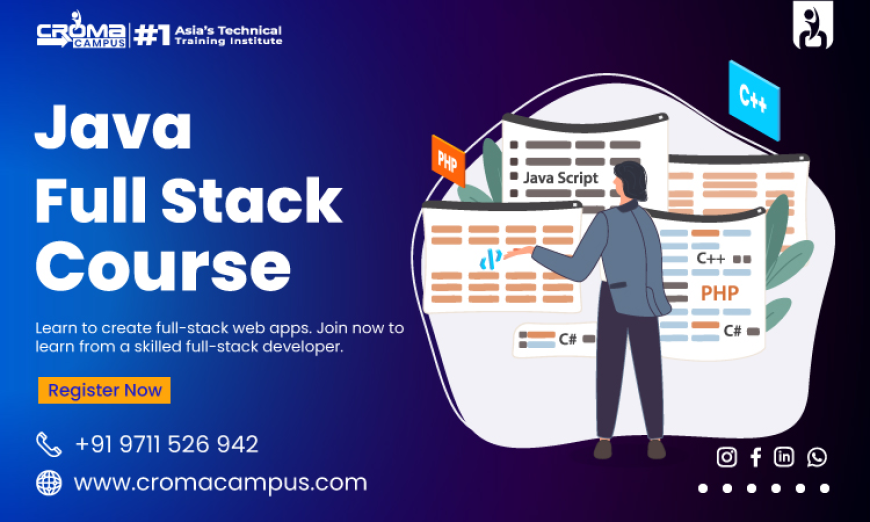What are the Three Testing Strategies in Java Full Stack?
Discover the three key testing strategies in Java Full Stack: Unit Testing, Integration Testing, and End-to-End Testing for robust and reliable applications.

Currently, the IT sector is growing quickly, and this is because of the inventions taking place every day. Modern web development is getting more powerful as developers build strong and reliable Java full-stack applications. For this, there should be a powerful testing strategy that has become an important part of the development lifecycle. Well, this ensures code quality, minimizes bugs, and improves performance. All these things lead to a better user experience.
There are different types of strategies that one can learn from this guide. But what if you don't have a clear understanding of the basic concepts of full-stack development? Well, you may need to apply for the Java Full Stack Developer Course for the same. For now, let’s begin to understand these strategies that will give you a basic idea.
Testing Strategies in Java Full Stack:
Here we have discussed the various testing strategies that you need to understand. So if you get training for the Java Full Stack Developer Course in Noida, this can help you get internship opportunities. Because in-class training can help you gain the practical experience you may need to stay ahead in this field.
-
Unit Testing:
Unit testing is the first step in making the software work properly. This means checking each of the parts of the small parts of the program, like individual functions, classes, or modules. Well, the main benefit of unit testing is to find the problems in the early stage when the code is still being built. As each of the parts is tested separately then it is easy to find and fix the mistake quickly. This can help you save time and help you keep the code clean as well as reliable. A unit test is a guide that shows how different parts of the program should behave.
As a developer, if you are looking to write unit tests, then you may need to use special tools called testing frameworks. These tools include JUnit for Java, NUnit for .NET, or Jest for JavaScript. You can make your writing and running tests easier and more organized with these tools.
-
Integration Testing:
Unlike unit testing, which focuses on individual testing, integration testing evaluates the interaction between the various components of the application. It checks whether the different parts of the program work together or not. This kind of testing is important in full-stack development, where the front end (what users see), the back end (the behind-the-scenes logic), and the database (where data is stored) all need to work smoothly together. Developers can find the bugs whenever the pieces interact with each other.
Some common ways to do integration testing include:
-
API testing:
This includes sending the requests to a system to check the responses,, which can make sure that data moves correctly between the client and the server.
-
Database testing –
This includes checking that the data is correct and stays consistent.
-
User interface (UI) testing
This ensures that the app looks and works as it should from a user’s point of view.
-
End-to-End Testing:
This testing is a kind of testing that checks the full app from beginning to end, just like a real user does. It tests every part of the app that works together to make sure that everything runs smoothly as a whole. As we know that unit testing checks how the parts work together, and end-to-end testing checks the whole system. So it gives attention to every little detail, such as clicking buttons, entering data, moving button pages, all work the way they should from the front end to the back end, and even with outside services.
This kind of testing is especially useful in full-stack development, where a good user experience depends on many pieces working well together. This kind of test helps catch things such as broken links, wrong data showing up, or problems with navigation.
You can use some popular tools such as Selenium, Puppeteer, and TestCafe for it. These tools act like a real user that includes clicking, typing, moving through the app, and checking if everything behaves as expected.
Apart from this, if you have taken Node Js Online Training, this can help you in building and structuring the applications. This training can help you gain the practical skills that make you more confident in building and testing Node.js apps.
Conclusion:
From the above discussion, it can be said that in this fast-changing world of full-stack development, testing has become not just a necessity but a benefit. So if you implement these testing strategies that include unit, integration, and end-to-end testing, you can ensure the reliability, flexibility, and performance of your applications. These testing strategies can help you form a strong framework that can achieve excellence in full-stack development.

 kirtikasharma
kirtikasharma